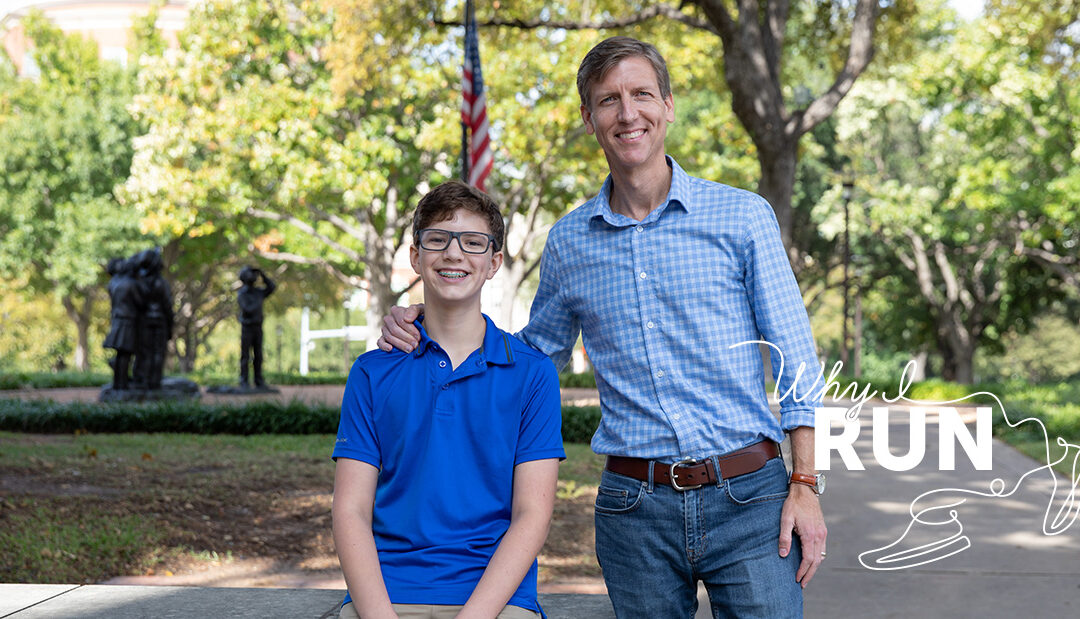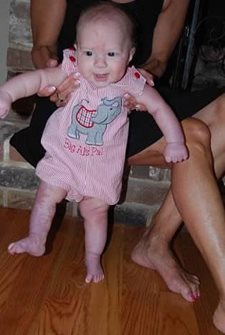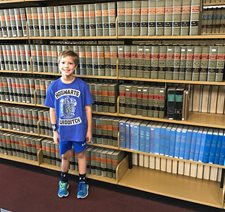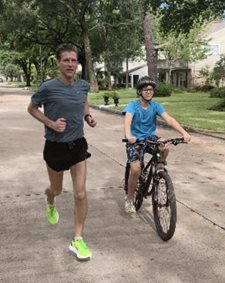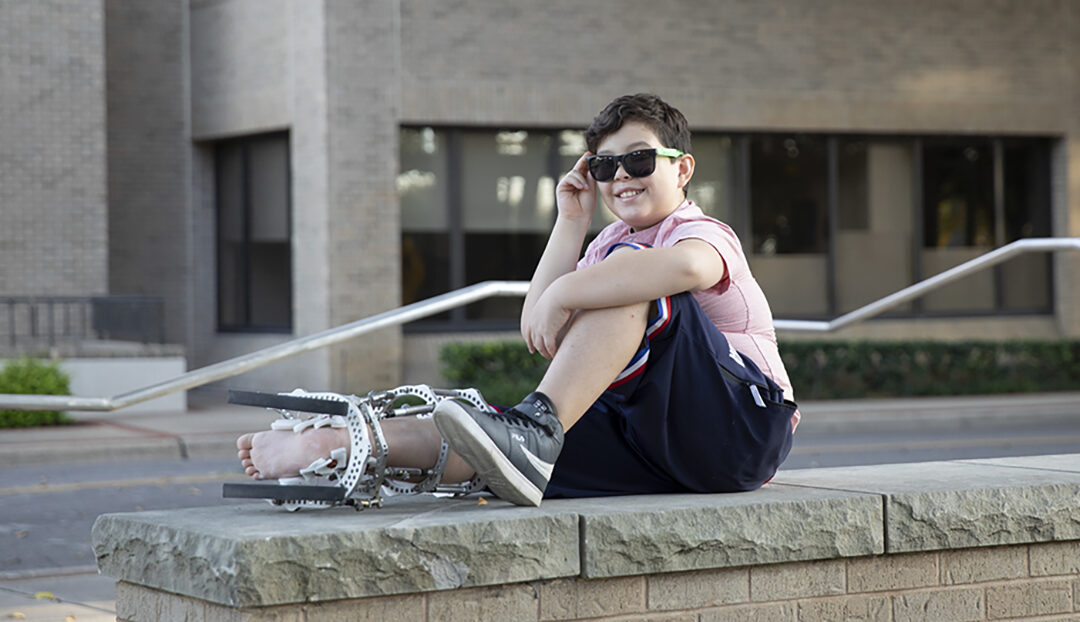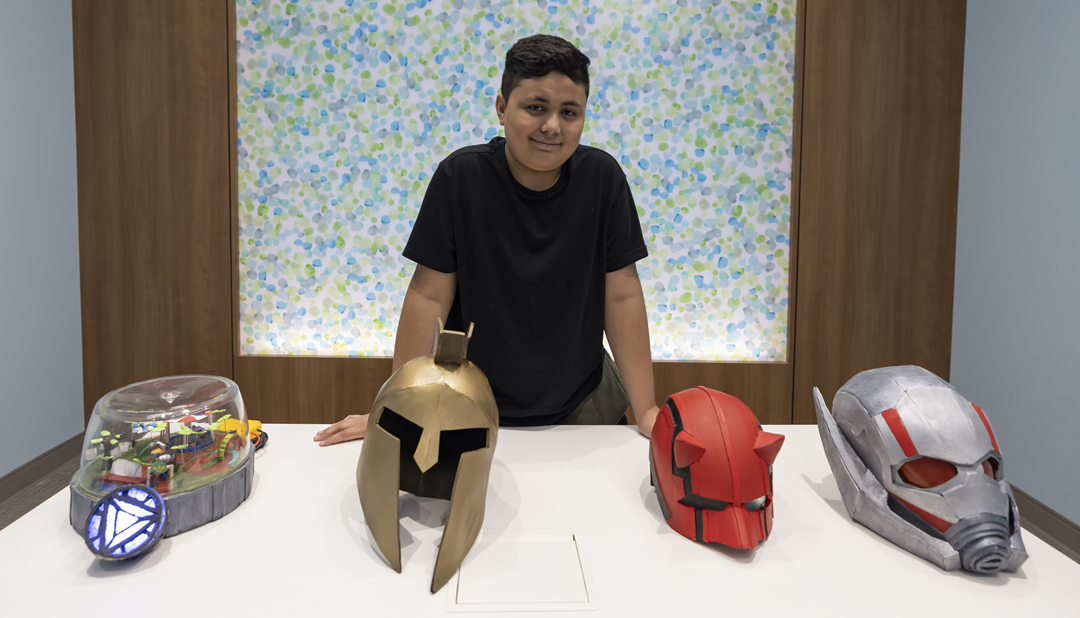
Santiago Braves Limb Reconstruction Like a Comic Book Hero
Cover story previously published in Rite Up, 2024 – Issue 1.
by Kristi Shewmaker
Santiago is an artist, creator and prop maker. An eighth grader from Josephine, he became an artist at a young age when his older brother Esteban inspired him to draw. Later, his parents, Alejandro and Maricela, surprised him with a desk and art supplies, which he fashioned into an art studio in his room. Over time, Santiago’s work has evolved from creating 2D to 3D art forms beginning with origami, which he used to begin making props based on movies.
“Drawing a character is fun, but being that character is really special,” Santiago says. A fan of Marvel Comics® and various movies, Santiago has created wearable props including the Batman® Cowl, Iron Man® Arc Reactor and Daredevil® helmet, which was signed by Daredevil film actor Charlie Cox. Santiago’s prop making mediums have advanced from using paper to cardboard to foam to 3D printing, and now, he is trying his hand at metal.

Through his school, Santiago has received multiple accolades for his art. In seventh grade, he won the regional University Interscholastic League (UIL) visual arts competition for his 3D miniature theme park based on Ant-Man®. The year before, at his sixth grade end-of-the-year awards ceremony, his school named him Artist of the Year. It was a significant award to the whole family because just a few months before, they had experienced the unimaginable.
On a usually empty road near Santiago’s home, it was dusk when a car took a wide turn and veered into the wrong lane toward him. Riding his dirt bike, Santiago swerved, but a mailbox was in the way, and the car struck him causing a severe traumatic injury to his left side.
“I was shocked,” Santiago says. “I didn’t feel anything, but I had an idea of what happened, and I didn’t want to look down.” The neighbor called 9-1-1. Then, Esteban arrived. “I felt bad for my brother,” Santiago says. “He saw everything.” While lying on the driveway, Santiago asked Esteban if his dirt bike was OK. “I tried to make a joke to brighten the mood, to bring a little light into this dark situation,” he says.
Santiago was taken by helicopter to Children’s Medical Center Dallas, where he underwent numerous surgeries. “We couldn’t believe this was happening,” Maricela says. “We have never had anybody in our family go through an accident like this.” After receiving initial treatment for his injury, Santiago was referred to Scottish Rite for Children under the care of pediatric orthopedic surgeon David A. Podeszwa, M.D.
“Santiago sustained a very severe leg injury — as bad as they come,” Dr. Podeszwa says. “His femur was shattered. We call it comminuted, meaning it was broken into dozens of pieces. He also had a segmental loss, a large portion of bone in his femur was missing.” The break in his femur also disrupted his knee joint, and his tibia was fractured. Santiago’s leg would need complete reconstruction.

In surgery, Dr. Podeszwa inserted a spacer with antibiotics into Santiago’s femur where the bone was missing. Then, he secured an external fixator onto Santiago’s leg that spanned from the femur across the knee to the tibia to hold everything in place. “With an injury to the bone, there is always a huge soft tissue injury associated with it,” Dr. Podeszwa says. “We needed his soft tissues to heal before we could reconstruct the bone in his leg.”
Santiago would continue to receive specialized care through Scottish Rite’s Center for Excellence in Limb Lengthening and Reconstruction (CELLR). Led by CELLR Clinical Director Dr. Podeszwa and CELLR Research Director Mikhail Samchukov, M.D.*, Santiago’s multidisciplinary team of experts also includes CELLR Director of Clinical Implementation and Outcome Studies Alexander Cherkashin, M.D.**, Emily Elerson, R.N., and pediatric psychologist Whitney Herge, Ph.D.
For more than 30 years, Drs. Samchukov and Cherkashin have pioneered research and development for limb lengthening and reconstruction techniques at Scottish Rite. Having studied under Gavril Ilizarov, M.D., in Russia, Drs. Samchukov and Cherkashin along with Scottish Rite researchers modified Ilizarov’s original external fixator and developed and patented the TRUE/LOK™ External Fixation System. Scottish Rite’s innovation and continual advancement, in collaboration with Orthofix® Medical Inc., has revolutionized limb lengthening and reconstruction methods through this system that is implemented by surgeons around the world. Santiago was the first patient at Scottish Rite to receive the TrueLok™ EVO, the latest generation in the series of circular external fixators.
After four months of healing, Santiago underwent femur reconstruction surgery in which Dr. Podeszwa initiated a technique called bone transport, a procedure that encourages new bone to grow. Because Santiago had lost 3 inches of bone and bone cannot regrow in a gap that large, Dr. Podeszwa cut his femur creating a segment of bone above the gap and a new space where bone could regenerate. Over many months, Santiago turned pins on the outside of his external fixator. The pins were connected to wires inside his leg that pulled the segment of bone down to fill in the gap caused by the injury. As the bone was transported into the gap, new bone grew in the space created above
“Of the 8-centimeter gap that he lost initially, we reconstructed a solid 7 centimeters of it,” Dr. Podeszwa says. “He basically grew himself a new 3 inches of thigh bone.”
“It was absolutely amazing to us,” Maricela says. “We cannot believe Santiago was able to do that.”
Bone transport is an uncommon procedure. “Fortunately, at Scottish Rite for Children, we not only have the support of the institution to manage very complex, labor-intensive treatment but also a team that is highly specialized and can help kids who suffer from complicated injuries or conditions,” Dr. Podeszwa says.
After a few more surgeries and a lot of healing, Dr. Podeszwa removed Santiago’s external fixator in August of 2023. Now, Santiago wears a knee-anklefoot-orthosis, a brace designed to improve mobility, increase bone and muscle strength, and enhance independence.
“Because of the magnitude of his injury and the damage to his knee and thigh muscle, Santiago will require rehabilitation to recover his knee motion and strengthen his quad,” Dr. Podeszwa says.
At Scottish Rite for Children Orthopedic and Sports Medicine Center in Frisco, Santiago undergoes weekly physical therapy, rotating between land and aquatic therapy. He works on endurance in the AlterG® AntiGravity Treadmill,™ which uses technology originally developed for NASA astronauts. It allows him to walk with less weight on his muscles, joints and bones as he builds strength. In the HydroWorx® therapy pool, Santiago works on mobility, knee range of motion and strengthening. “Santiago has exceeded our early expectations regarding rehab,” Dr. Podeszwa says, “and we look forward to seeing continued improvement over the next six to 12 months.”

Santiago has endured a long, difficult journey since the injury, but he says that now, he feels more relaxed, more free. “In my opinion, the hard part is over,” he says.
Maricela is happy to see Santiago progress. “I think God specifically put Dr. Podeszwa in our lives and now, slowly, we can see that Santiago is going to be OK. He has the best doctors working with him, and that’s a blessing. We’ve learned to accept what’s going on and enjoy the fact that he’s here.”
According to Dr. Podeszwa, Santiago is a role model for kids who go through this type of complex treatment after a traumatic injury. “It’s amazing what adversity can do,” Dr. Podeszwa says. “Some people champion it. Others are wrecked by it. Fortunately, Santiago has championed it. He has an incredible artistic mind and has put his energy into maintaining his academic and personal growth in spite of all that he’s been through. It’s been impressive to see.”
“Scottish Rite is a symbol of hope,” Santiago says. “I’ve learned that I can be strong when it comes to most things going on around me and with me, and I can find light in every dark place.”
